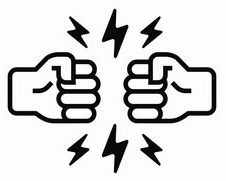What are mid field monitors?
What are mid field monitors?
Nearfield monitors are designed to be positioned approximately one to two metres away from the listener, making them ideal for smaller studios, whereas mid-field monitors are generally larger and optimised for positioning between two and four metres away from the listener.
What size room do I need for a midfield monitor?
A room that’s 5x5x3 m in size is perfect for 8” monitors. If you’re unlucky and do not have access to such a big room, you should purchase 5” monitors. If the room is much bigger than 4x4x2. 5 m, you may have reverb issues.
What are nearfield monitors used for?
These types of monitors are small enough to sit on a stand or desk close to the listener. They’re specifically designed for listening to close distances so that the greater proportion of direct sound goes directly to the listener rather than reflecting off walls and ceilings.
What is active near field monitors?
Active nearfield monitors are almost always two-way designs, meaning that they use two drivers — often referred to as a tweeter and a woofer — to produce their sound. Tweeters, being smaller and lighter, can move quickly, which allows them to vibrate at higher frequencies.
What does nearfield mean?
“Nearfield” is a reference to the range of frequencies the speaker is capable of replicating. While most all monitors replicate up to an almost inaudibly high 20kHz pitch, they primarily differ in how low they go. Below, you can observe the (approximate) frequency ranges various sized drivers will physically replicate.
Why should you have a subwoofer in your home studio control room?
A Subwoofer will allow you to hear and even feel frequencies that are much lower than those able to be played through your mid-high monitors, which is critical to get an idea of how your tunes will sound when played on big systems.
How far should you sit from studio monitors?
For the majority of home studios, the best distance to place monitors is approximately two to three feet away from the wall. This decreases the amount of bass buildup, giving you a way cleaner sound that lets you hear all the details.
What is the 38% rule?
THE 38 PERCENT RULE The placement method used here is based on the “38 percent rule” which theorizes that the best listening position is 38 percent into the length of the room, when measured from either the front or rear wall. This offers the best compromise of peaks versus nulls for any given room size.
How far away should nearfield monitors be?
three to five feet
“Nearfield” refers to monitoring where you are hearing more of the speaker and less of the room’s reflections — in small rooms and project studios, this means your listening position is typically going to be three to five feet from the monitors.
What are two way monitors?
2-way monitors then, generally have a larger speaker for the low range (woofer), and a smaller one (tweeter) for the higher. 3-way setups include a speaker to handle the midrange. And as you would expect, they are generally somewhere in between the size of a woofer and a tweeter.
Are studio monitors passive or active?
Home stereo or hi-fi speakers are almost always “passive” speakers; i.e. they require an external (power) amplifier with speaker outputs. Studio monitors, with very few exceptions, are “active” or “powered” speakers, which means the power amplifier is built into the speaker cabinet.
Do I need a sub with my studio monitors?
It depends completely on what you’re doing with audio. If you’re mixing sound for TV or motion pictures, then a multi-speaker monitoring setup with a subwoofer is practically essential. If you’re mixing your band’s demo tracks that you recorded in your basement, you really only need a stereo pair of studio monitors.
What’s the difference between mid field and near field monitors?
Mid-field studio monitors are slightly larger monitors than Near-field studio monitors, and with their three-way designs, they generally require more power. Their wattage requirements are usually around 200W to 300W. Near-field studio monitors have small drivers; therefore only require minimal power to operate.
Which is the best near field studio monitor?
Near-field studio monitors optimized to operate at lower mid to higher mid-range of 600 Hz to 3500 Hz depending on the driver and make of the studio monitor. Mid-field studio monitors such as the LYD 48 from the LYD series have a crossover frequency of 460Hz to 5500KHZ.
How big are the woofers on a mid field monitor?
They have larger woofers typically of between 8 to -10” and often have got three-way designs. With Larger cabinets for more bass extension, better mid and high-frequency dispersion at greater distances, mid-field studio monitors are designed for bigger studio rooms.
How big does a nearfield monitor need to be?
Most nearfield monitors don’t take up a ton of space. They’re space-efficient two-way systems, which are suitable if you’re working in a bedroom studio. With a nearfield monitor, you get a tweeter and a regularly-sized 4 – 8” second driver.
